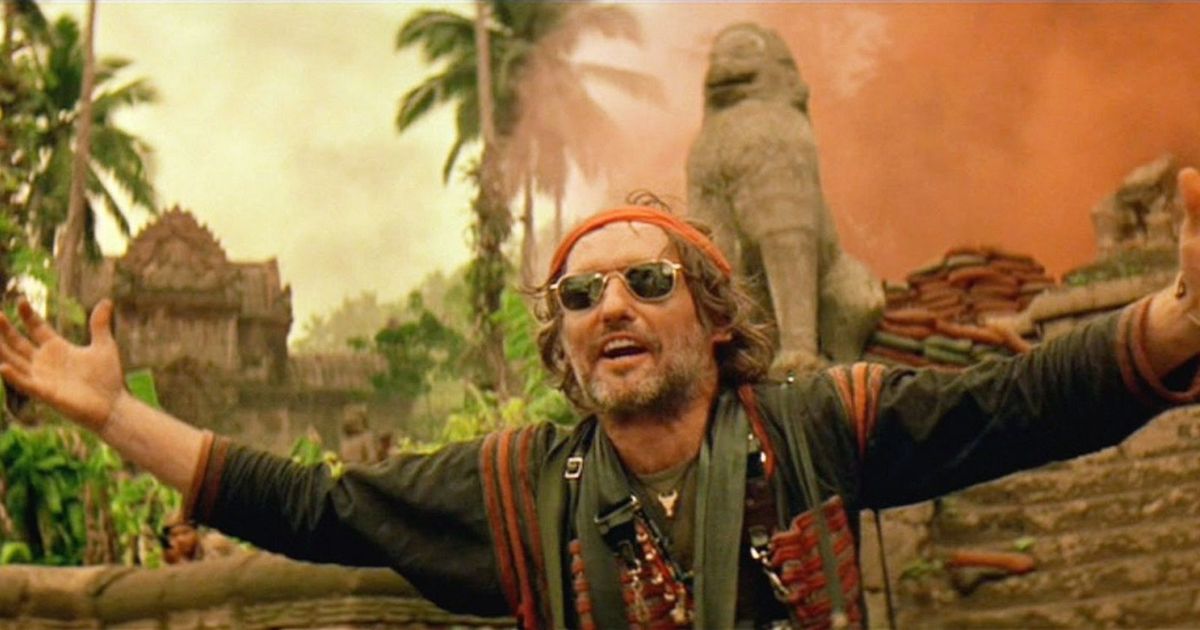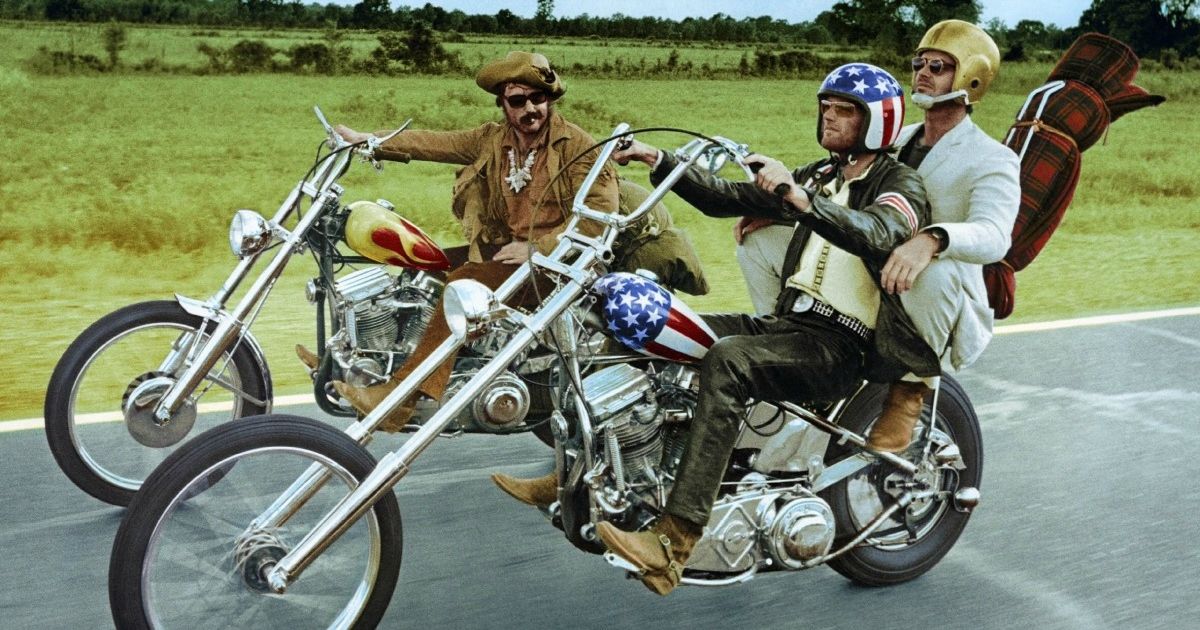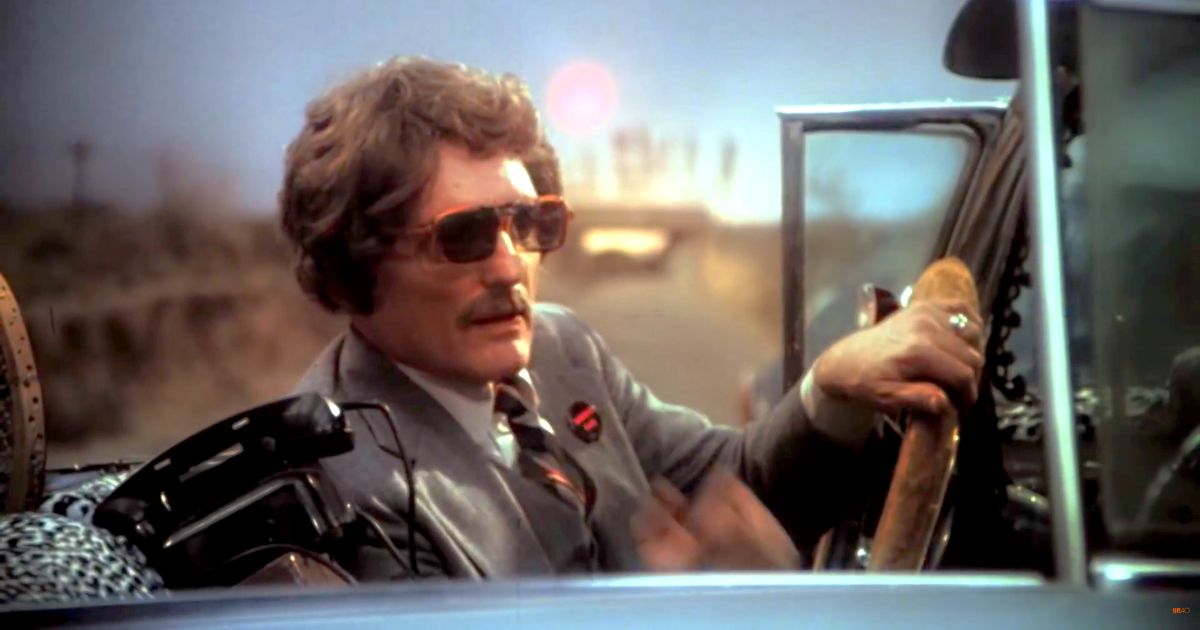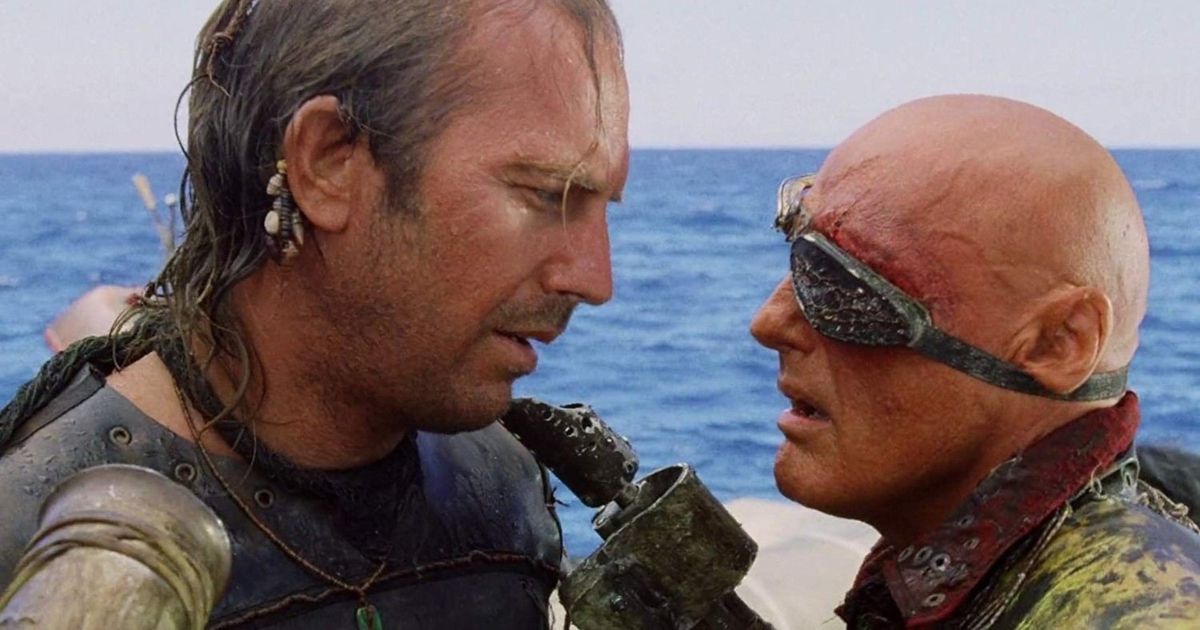The success of his directorial debut, Easy Rider (1969), allowed actor Dennis Hopper to shed his Golden Age of Hollywood persona as the kid relegated to the edge of the frame in John Wayne’s close-ups from Westerns like The Sons of Katie Elder (1965), or Rock Hudson and Elizabeth Taylor’s close-ups from Giant (1956) — even James Dean’s in Rebel Without A Cause (1955). Despite his brief heyday in the early 1970s as the eminent hippie filmmaker Hopper would one day reflect on his career with an air of disappointment, telling Charlie Rose in the 1990s:
I don’t feel I’ve done it yet. I don’t feel I’ve really ever done the great part. I don't feel I’ve really ever directed the great movie. I look at Anthony Hopkins [in] Remains of the Day. And I go, “Where is that part? Where is a movie like this that I could do? Why do I never even see these kinds of scripts?” They never come close to me.
Like many promising filmmakers from the New Hollywood era, Hopper’s career had its share of failure. In his case this might just have something to do with his legendary alcoholism and substance abuse. For decades Hopper had built a bad reputation for perpetual inebriation and erratic behavior on set.
Though Hollywood has long held its own reputation as a haven for those who partake in alcohol and illicit substances, like a leper cast out of a den of other lepers, for several years Hopper had all but blacklisted himself from the film business as a drug-crazed lunatic. Like Heath Ledger’s Joker in The Dark Knight (which was influenced by Hopper’s Frank Booth character in Blue Velvet), Hopper was a real-life “agent of chaos.” So let’s “partake” in five of Hopper’s most chaotic movies.
5 Blue Velvet (1971)
Hopper’s newfound sobriety in the mid-1980s gave his career a second wind, beginning with a career-best performance as the insatiably Dionysian “Frank Booth” in David Lynch’s Blue Velvet (1986). The story goes that Hopper begged Lynch for the chance to play his villainous underworld maniac, assuring the writer-director, as Cinephilia & Beyond recounts:
You have to let me play Frank! Because I am Frank.
Though Hopper’s reputation preceded him, Lynch couldn’t deny that it fit the nitrous-oxide-addled character like a glove. But it begged a pragmatic question which Lynch put to Laura Dern (who plays innocent love interest Sandy in the film) during pre-production:
Do we really want to have lunch with Frank?
In the end, Lynch put his fears aside and in return Hopper gifted Lynch with a version of himself in front of the camera that many directors recognized as the actor’s uncontrollable former self, tormenting Kyle MacLachlan's protagonist Jefferey on the same wild-eyed trip that he tormented his colleagues for decades. Luckily, Lynch got the old drug-crazed Hopper on the right side of the camera.
4 Easy Rider (1969)
Hopper took a road trip from Los Angeles to New Orleans in 1969 with fellow actor Peter Fonda, a small crew, and a trailer filled with motorcycles, camera equipment, loaded guns, and a large helping of psychoactive drugs. The result was his directorial debut, Easy Rider, which was somehow not only intelligible considering its context, but became one of the greatest counterculture films ever made. Speaking to Peter Biskind for his book Easy Riders, Raging Bulls (1998), the film's soundman, Peter Pilafian, said:
There was disagreement as to what the film [was actually about] and what stage [the story] would be at when the characters got to Mardi Gras [in New Orleans]. Dennis was this semi psychotic maniac. There would be a couple of handguns, loaded, on the table. He liked that kind of atmosphere.
Baird Bryant, one of the cameramen on Easy Rider, told Biskind that on the first day of shooting Hopper gathered the crew together and barked like a dictator:
[Hopper told us] he’d heard a lot about how many creative people there were on this crew, “But there’s only one creative person here and that’s me. The rest of you are all just hired hands, slaves.” [Hopper] was totally out of his mind... just raving.
Despite the tense atmosphere and absence of a shooting script, the quasi-documentary feel of Easy Rider captured the zeitgeist of the hippie movement at large and turned out to be just coherent enough to become a massive hit at the box office. The film would scare the pants off Hollywood’s old guard, as its mammoth critical and commercial success helped catapult the “New Hollywood” movement.
3 Human Highway (1982)
Human Highway is a little-known musical comedy featuring Devo (yes, the band with the funny red hats) as a group of nuclear trash collectors who try to warn the inhabitants of a power plant town about an impending outbreak of radioactive pollution. It was directed by and starring Dean Stockwell — known for his supporting roles in Wim Wenders’ Paris, Texas (1984) and David Lynch’s films — as well as singer-songwriter Neil Young who went by “Bernard Shakey,” a pseudonym every bit as bizarre as the film itself.
Despite all the rock and roll madness that coalesced in the making of Human Highway there was one performer who made even “Bernard Shakey” appear sane. Speaking to Rolling Stone in 2010, Devo keyboardist and vocalist Mark Mothersbaugh said:
We were kind of repulsed by the whole experience [on Human Highway]. I thought Dennis Hopper was retarded when we met. He couldn’t say his lines. He couldn’t speak a sentence. He just ignored every direction he got [from Stockwell and Young]. He was a short-order cook in the movie and he was playing with a knife and he ended up cutting Sally Kirkland really bad.
In December 1985 Kirkland filed a $2 million lawsuit against her old Human Highway co-star Hopper, seeking additional damages from Young for not keeping the “Easy Rider” on a shorter leash. Kirkland alleged that Hopper was under the influence of amyl nitrate, cannabis, and tequila while shooting a scene with her character that involved a knife trick. Rather than the dummy prop he was supposed to use, Hopper grabbed an actual knife and accidentally severed a tendon in Kirkland’s finger in the middle of a take.
Though Kirkland would eventually lose her case, its court transcripts gifted the press with the greatest review Human Highway would ever receive. When one witness was asked what the film was about they responded, "I haven't the faintest idea."
2 Waterworld (1995)
Though Hopper was almost a decade into his sobriety by the time he landed the villain role of “The Deacon” opposite Kevin Costner’s protagonist, “The Mariner,” Waterworld (1995) could hardly be described as a dry set. The film was conceived by screenwriters Peter Rader and David Twhoy as something of an oceanic Mad Max ripoff.
Waterworld takes place during a post-apocalyptic future where the polar ice caps have melted, causing sea levels to rise (bit of a stretch right?) and submerge the Earth in seawater. After barely surviving the shoot on Jaws (1975), Steven Spielberg warned Waterworld director Kevin Reynolds in a phone call, here recounted by Yahoo:
Do not shoot on water! You’re going to need a couple of shots on water, so use second unit for that. Do all of your [filming] in a tank or a stage.
Spielberg’s advice fell on deaf ears as Reynolds and Costner went full speed ahead, setting out to shoot Waterworld “for real” on the actual Pacific Ocean off the coast of Hawaii. Not long after shooting began a hurricane destroyed the gigantic floating set which was crucial to the beginning half of the film.
Even after the set was rebuilt ocean winds constantly turned it around until the Hawaiian landmass would rear its green head into the background of the camera’s shot. The problems kept coming, though the penitent and years-sober Hopper was the least of production’s worries.
In order to pull off the massive production feat of setting an entire movie on water the filmmakers eventually abandoned the Pacific in favor of an artificial seawater enclosure like the one James Cameron would later use on Titanic (1997). But with a grueling 166-day-shoot it was too late to save the production budget which ballooned from an already-large initial $100 million to $175 million, breaking records at the time for the most expensive movie ever made.
Waterworld’s disastrous production and reports of budget was easy meat for Hollywood tabloid sharks and film critics who tore the film to shreds when it finally hit theaters, nearly costing Kevin Costner his career along with The Postman (1997).
1 Apocalypse Now (1979)
Hopper and Marlon Brando may share a few scenes in the climactic moments of Apocalypse Now, as Hopper’s unnamed photojournalist practically worships’s Brando’s Col. Kurtz, but behind the scenes the two actors nearly threw punches over a simple misunderstanding. During a heated day of filming in the jungle, Brando thought Hopper had accused him of not having read Joseph Conrad’s Heart of Darkness (1899).
Brando hadn’t read the novella (or John Milius’ script for Apocalypse Now) and was already sick of director Francis Ford Coppola haranguing him for not understanding Conrad’s original story, let alone their concept of updating the novella’s setting from the nineteenth century Congo to modern-day Vietnam. Hopper was unaware that he had hit a nerve with the accusation and was surprised at Brando’s reaction. Speaking to The Hollywood Reporter, Hopper said:
[Brando] gets up and says “I don’t have to listen to this! I don’t have to take this!” And he is screaming and yelling “Why do I have to hear it from him? I have to hear it from this punk!” And he storms out.
Hopper spent the rest of that evening toying with Brando and salting the wound until the two nearly came to blows. For the rest of his time in the Philippines Brando refused to be on set at the same time as Hopper.
Though Hopper somehow managed to find a way to make an already-grueling production even more difficult, it seems the actor discovered a home away from home in the Philippines when he stumbled onto the set of Apocalypse Now drunk and high late in production.
From Coppola down to the lowliest production assistant, the cast and crew of Apocalypse Now were pretty much all high on their own supply. It was one of those rare moments where a guy like Hopper found the place where he belonged: a set filled with brain-fried hippies on the exact same ego trip he’d been on for years.


.jpeg)



